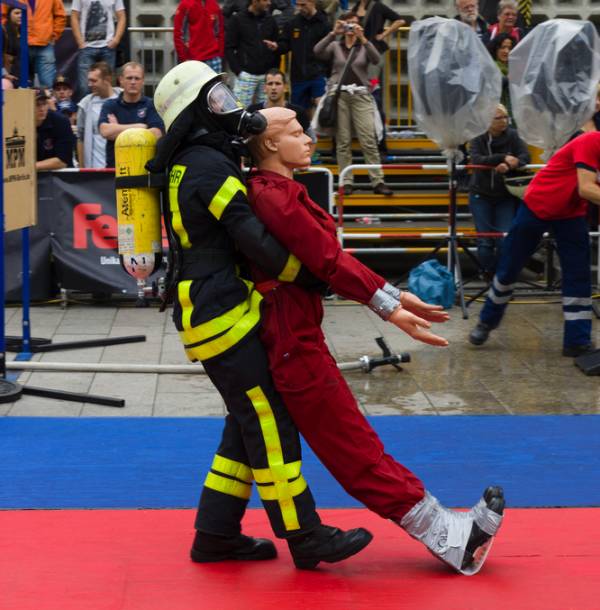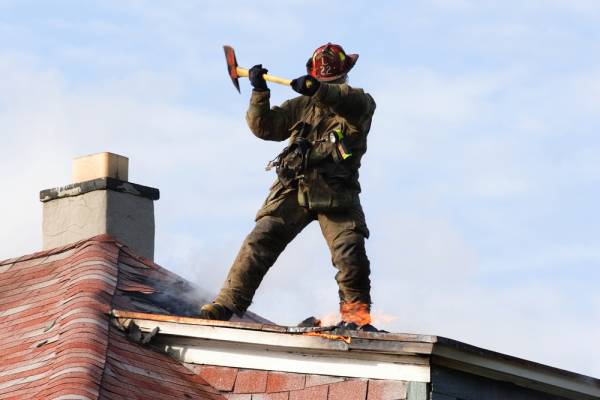Here we are, the year is 2030, and fire calls are no longer the same as they were back in the day. You know that saying, “They don’t make ‘em like they used to.” Well, they were right. Generations ago homes were built with much sturdier materials and the contents inside were made with natural fabrics and wood. In the most recent decades, though, we made a transition to save money on fabrics and material – and made the fire scene even more deadly.
Here in 2030, contractors have been trying to save money for years by using cheaper material to build houses. This creates fires that spread more rapidly, burn hotter, and more quickly compromise structural integrity. Fires are causing structural collapses even quicker than generations ago making the job of firefighters inside even more unsafe. In addition, manufactures figured out how to save money by using more petroleum-based fibers and plastics when making furniture. While that’s great for the profit margin, this is causing fires to spread more rapidly and produce more toxic fumes, forcing firefighters to act quicker.
The smoke detectors, carbon monoxide detectors, and other preventive measures that would usually last for years are requiring more annual maintenance because of cheaper manufacturing, too. As a society, we are becoming inundated with distractions and the annual checks of this equipment are often forgotten. This means residents are getting alerted later when an emergency does arise and fires are burning unchecked for minutes longer than they have in the past. Firefighters now need to be faster, stronger, and more agile than ever.
The old-time firefighters who were resistant to change are retired now, and the top experts have been called on to test and recruit even more physically qualified applicants to battle these fires. We bring to you the 2030 Fire Department Physical Ability Test:
All current firefighters who are put through this test will be assessed each year of their employment. Components of the original CPAT are used here to still mimic the demands on the fire scene but they’ve increased the demands.
1. Sled or Dummy Drag
All applicants will have the physical ability to drag a 185lb sled or dummy one hundred feet. With fires spreading more rapidly, residents will have a harder time getting out of these bad situations. Whether it’s a resident or one of your brothers, all future firefighters should be proficient at this.
Note: For decades we used a 165lb dummy, but unfortunately the average weight of Americans have steadily gone up, and therefore a new, more realistic dummy has to be saved.

2. 3-Mile Run
This will not only test the endurance of our firefighters, but also ensure there is not extra weight gained year-to-year once hired. With better endurance your will be using less air while physically exerting yourself, enabling you to increase their efforts during the fire call.
3. 1RM Deadlift
All applicants will be required to lift their bodyweight in the deadlift. This will ensure you have a good base of overall strength. Throughout your career you will be called to lift, assist, and pick things up and put them down. The deadlift is one of the best measures of this.
4. Stair Climb
While wearing a 50lb weighted vest (to replicate all of your SCBA equipment), you will be required to do a stair climb for three minutes straight with a sixty-step-per-minute pace. In one of your hands you will be carrying a 25lb dumbbell to mimic carrying your equipment. In the fire service there is an expression, “Never go in empty handed.” When you are on a fire call, you will always have something in your hand like your ax and Halligan just in case you find yourself in a bad situation and need to break into or out of somewhere. By holding a 25lb weight, you will more accurately mimic the demands of climbing up a flight of stairs.

5. Search and Rescue Obstacle Course
The obstacle course will be completed while wearing a weighted vest. You will be required to mimic all movements you could encounter in a real fire.
- Hose Drag – Start off by dragging a 200-foot hose line over your shoulder and across your chest. Dragging it 75 feet around a cone, then continue running or walking for 25 more feet. Once you reach your marker you will get down on one knee and pull the remaining hose line the final fifty feet.
- Ladder Raise and Extension – Grabbing a ground ladder off of the truck, extend it up to a designated destination.
- Forcible Entry – You will be prompted to hit a spot on a door where your force and accuracy is measured.
- Search and Rescue – You must go through a smoked-out maze where you are given the task of locating a downed resident. You will be carrying your ax or Halligan with you. Once you locate the downed victim, you must then drag them to a safer position outside.
This is a timed course, the applicants who complete it the fastest on the first go-around are scored. The score of this obstacle course will be added up and account for 50% of your overall performance.
No two fires are the same. You will always be thrown a curveball. The last thing you want to battle during your career is yourself. It’s the one thing you have total control over when you are on a fire call. No matter what all of the external conditions are, never let your physical conditioning be the reason that something goes wrong.
Photos courtesy of Shutterstock.






